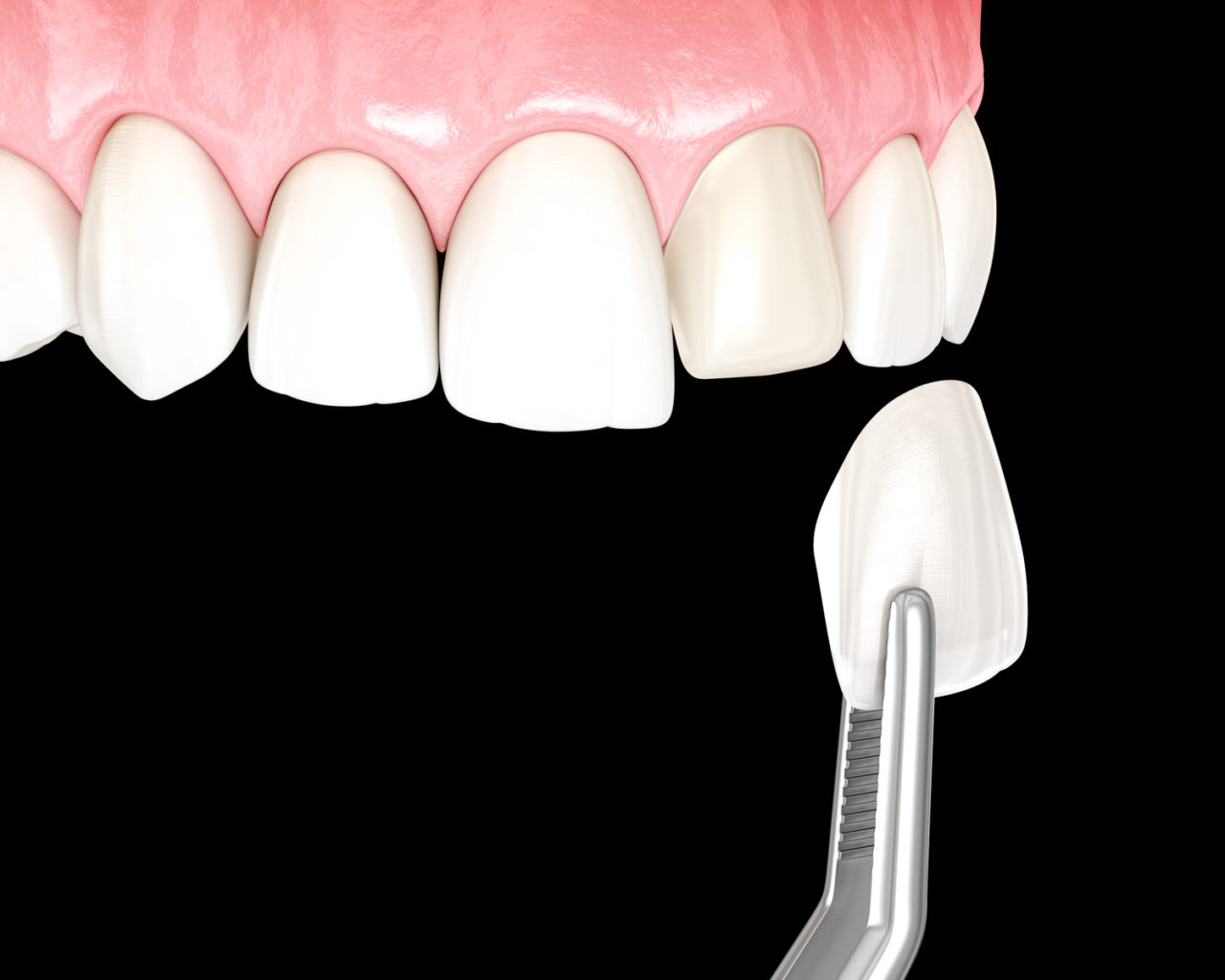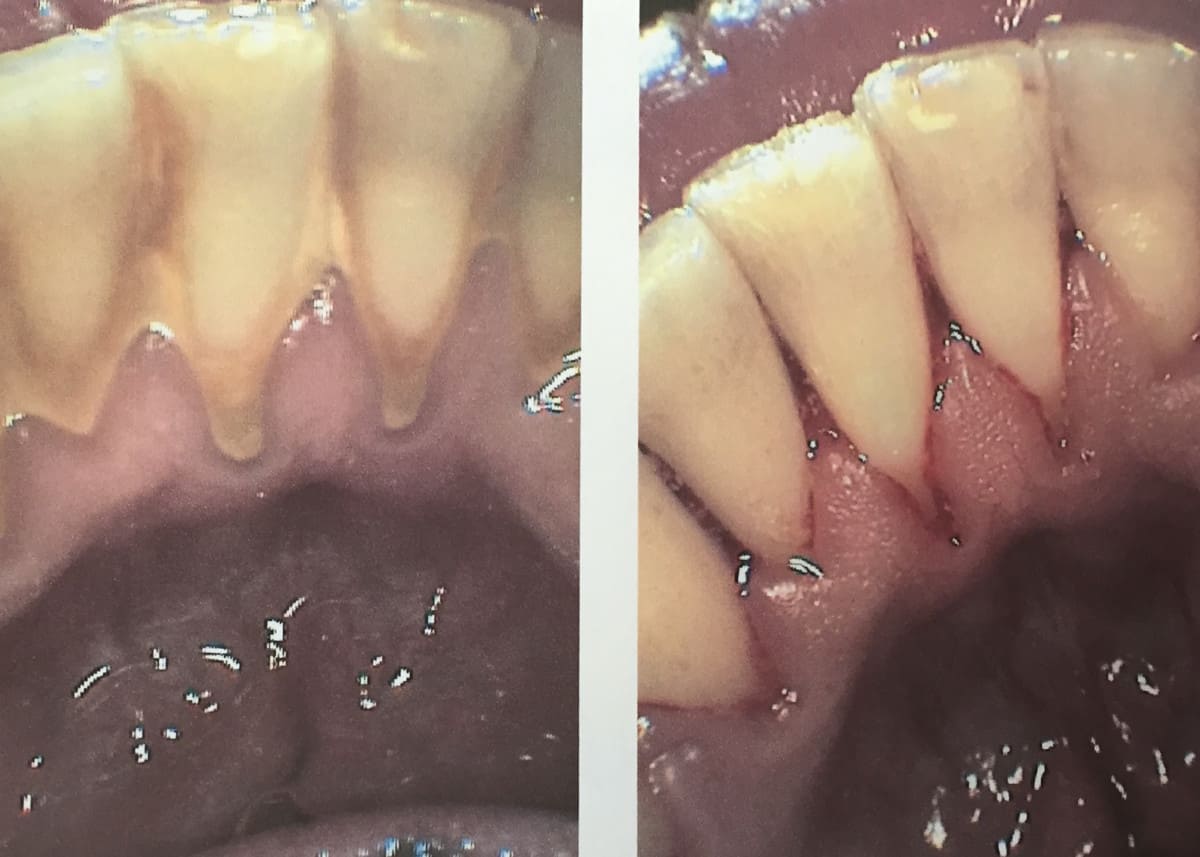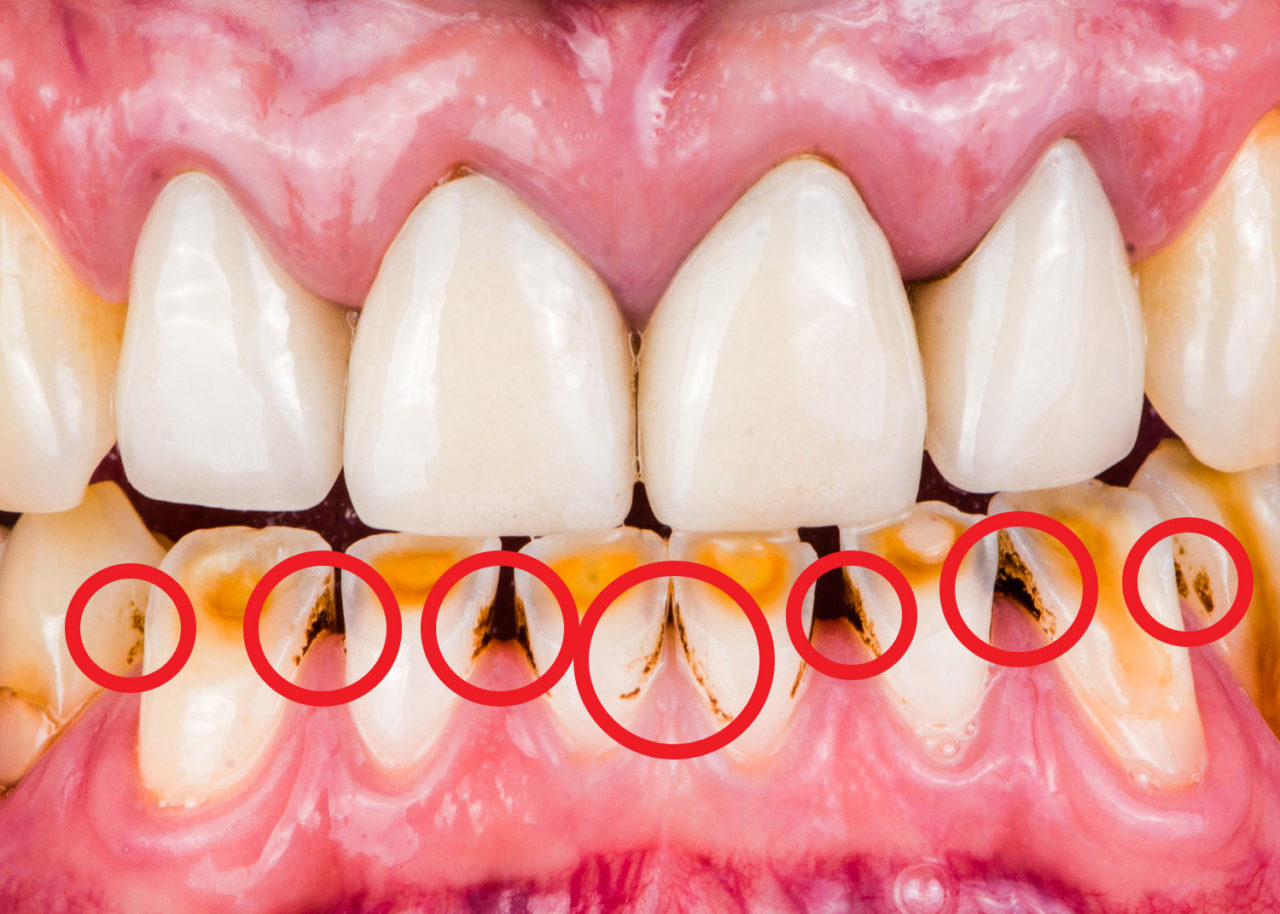Dental veneers can vary in colour, shade, and vulnerability to staining. Older veneers are more susceptible to stains and discolouration. Sometimes, people may not like the colour of their veneers, or they have older veneers that were put on to match the natural teeth and are not as white as they would like. I have had patients ask me if it is possible if they can whiten their teeth veneers.
Teeth veneers cannot be whitened because veneers are made out of porcelain or composite. Both hydrogen and carbamide peroxide do not affect porcelain or composite colour. The colour of porcelain is determined during the fabrication process before application onto the teeth and is stain resistant.

In this post, I go over the different types of stain and their relevance, why veneers cannot be whitened, ways to safely remove surface stains from the veneers and how you can change your veneers and get a whiter smile. But beware, there are risks and disadvantages of changing veneers you need to know.
Whitening dental veneers; Types of stain and why you can’t whiten them
There are two different types of stain when it comes to teeth and veneers. Intrinsic stain and extrinsic stain. Both of these types of stain are very different, and the difference between them decides what you can do to improve the colour of the veneers.
Intrinsic stain is embedded WITHIN the tooth structures, or the restoration (veneer), think of a sponge absorbing water.
Extrinsic is on the outside/exterior surface of the tooth, think of sticker on a surface. The sticker sits on the outside and does not get absorbed (however, they can be extremely hard to remove from the surface sometimes, just like extrinsic tooth stain).
Older veneers were made out of material that is more porous and more prone to discolouration and intrinsic staining over time. If this is the case, you may want to talk with your dental professional about veneer replacement if you are not happy with the colour of the veneers.
Veneer replacement is the only option as you cannot change the colour after the veneers are made. The colour is set when they fire the veneer in an oven/dental kiln. After the veneers are fired and the colour is set, and they are glazed and painted to look even more like natural teeth. Due to this fabrication process, the colour is permanent once completed.
Over time if the dental veneers absorb pigment, there is no way to whiten them.
If someone tells you you can whiten dental veneers in terms of changing their colour, unfortunately, they may not know what they are talking about. Maybe at no fault of their own, they may not have been taught well. Unfortunaly there are people out there that will say anything to sell a product.
Read Now: Why Teeth Become Yellow and Whitening Tricks That Worsen It
Dental calculus (tartar) can make veneers appear more stained
Also, sometimes the calculus (also called tartar) can build up so much that it is visible on the teeth. Calculus is calcified bacteria onto the teeth and is what we dental hygienists work so hard to remove.
You cannot remove calculus with brushing and flossing effectively and need a dental professional to remove it.

Right picture: After calculus is removed.
As you can see in the photo, the calculus has a yellow and brown colour and makes the tooth appear stained. The calculus can form on the front surfaces of the teeth as well, and make dental veneers appear stained.
Dental calculus is yellow in colour, and over time if it comes in contact with blood, it can take on a darker brown appearance. It can also absorb pigment from food and drink, also making it appear more stained.
Sometimes people think that their veneers are stained and discoloured. However, it is the calculus that is causing it.
A simple dental hygiene cleaning will remove the calculus and make your gums and overall oral health healthier!
Read now: How Dental Hygienists Clean Teeth! What You Need to Know!
Will hydrogen peroxide whiten dental veneers?
Veneers cannot be whitened (bleached) as the peroxide used to whiten natural teeth has no effect on the materials veneers are made out of, including older veneers.
To change the colour of dental veneers, they need to be replaced with new veneers.
However, extrinsic stain (stain on the outer surface) can make the veneers appear darker and not as white.
Extrinsic stain can be removed, but please do not try to remove it yourself at home because some at-home products are too abrasive and can remove the glaze on top of the veneer when it is being made.
If the glaze is removed, it can change how the veneers reflect light, changing their appearance, as well as make them more prone to staining.
Avoid abrasive “whitening” products to prevent veneer damage
If the wrong products are used, they can damage the veneer, remove the protective outer glaze and make it more prone to staining over time.
I have a personal vendetta against whitening toothpastes because they are marketed so well that people buy these products. Whitening toothpastes do not work to change the colour of the teeth and can cause irreversible damage to the teeth, including veneers.
Read Now: What Causes Zingers After Teeth Whitening? Hygienist Explains
Newer veneers are highly stain-resistant and should not be discoloured with intrinsic and extrinsic stain.
However, heavy tobacco/smoking, pigmented diet (including wine, blueberries, beets), coffee, and tea consumption can contribute to more staining.

The material used to fabricate the crowns/veneers is harder than the natural tooth surface and, over time, can wear down the natural tooth structure if the bite is not ideal.
Also, you can see that the crowns/veneers have not accumulated any extrinsic stain.
How to safely remove surface (extrinsic) stain from dental veneers
To remove the extrinsic stain, it is best to see your dental professional so they can treat the area specifically, instead of using an abrasive product on all your teeth at home.
The dental professional may be able to scale off the stain or use a special polish that is safe for the veneer to remove the stain without damaging the veneer.
As I mentioned before, you cannot change the colour of the dental veneers because the colour is determined while the veneers are being fabricated.
Again, using abrasive products can damage both the dental veneers and the natural tooth surface of the rest of your teeth that do not have the veneers. So please be careful!
Do not rush into changing your dental veneers; risks and disadvantages
When dental veneers are placed on the teeth, a small amount of tooth structure is shaved away to allow the optimal room for the veneer to sit on the teeth so it does not impede your bite or push out your lips.
It is important to remember that irreplaceable tooth structure is removed every time a new dental restoration is placed.
And you can only remove so much tooth structure before you reach the center of the tooth that houses the nerves and blood vessels and requires a root canal.
Veneers can fail like any other dental restoration, with cavities forming or wear and tear over time.
I always recommend getting a second opinion from another dentist/dental professional. It is always a good idea to have multiple perspectives!
I only recommend changing the veneers if it is absolutely essential, or someone can’t cope with the appearance of their old veneers, such as them looking like white chicklets, or they are heavily damaged.
I see the increasing trend of people getting full sets of veneers and dental crowns at such a young age, purely for aesthetic purposes.
Here in Canada, dental professionals have much more strict ethical values than in some other countries, and most dentists here in Canada would not allow their patients to go through with this treatment. They will communicate with the patient that this treatment should not be done because it can cause irreversible damage to the teeth and long-term recurring problems.
If the long-term risks and recurring issues are not discussed, that is a huge red flag, and I would not go back to that dental provider.
As I mentioned previously, dental restorations can and will fail eventually, especially when done at an early age. And doing invasive treatment like a full set of veneers and crowns can lead to premature tooth failure.
I hope I have given you some insight into whitening dental veneers and the fact that you cannot change their colour. I am sorry if someone has told you otherwise! I don’t want you to waste your money on expensive teeth whitening products that won’t work!
Have a lovely day,
Holly 🙂
